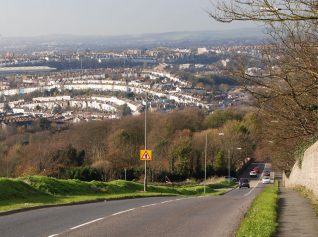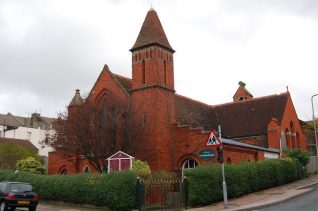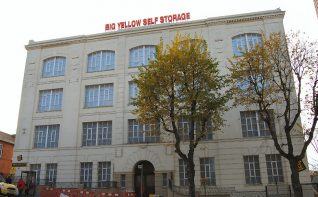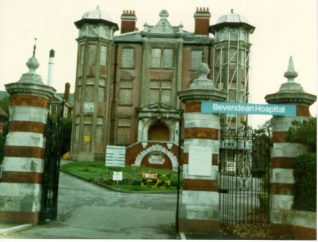Bear Road and East Preston





Please note that this text is an extract from a reference work written in 1990. As a result, some of the content may not reflect recent research, changes and events.
Bear Road has an average gradient of 1:11 and a maximum of 1:8, and formed part of the boundary between Brighton and Preston until 1928; it took its name from the Bear Inn, a centre for bear- and badger-baiting in the late eighteenth century for the ‘entertainment’ of visitors. (Bear-baiting was legal until 1835.) On Bear Hill to the north of Bear Road, at a site approximating to 89 Ladysmith Road, once stood the Bear Mill, a white post-mill with a round house and cloth sails; it was erected in around 1810 and stood until about 1903. Near the police aerial mast at the top of Bear Road stood the Race Hill Mill. Also a white post-mill, it was moved to the site over three weeks in December 1861 and January 1862 from Albion Hill where it had been known as the Park Mill. However, it collapsed on the morning of 16 May 1913 after being disused for several years. {15,109,249a,249b}
The area to the north of Bear Road, sometimes known as East Preston as it formed the easternmost part of that parish, was developed from the early 1900s and many of the road names have Boer War connections. The parish church of the area, St Alban’s in Coombe Road, was built in 1910-14 by Lacy W.Ridge in Early English style; on 15 May 1974 the parish was merged into the new parish of the Resurrection. The parish room at the corner of Bear Road and Riley Road was built in 1902-3 and is now a polytechnic annexe. The lower part of Coombe Road is dominated by two large factories on either side of the road. The southern one (Tyreco Ltd) was erected in 1917 for Oppenheimer diamond merchants but was taken by Allen West and Schweppes in 1927 and later by CVA Tools. The impressive factory opposite was erected in 1918 as another diamond factory but is now the home of Dentsply, one of Europe’s largest false teeth manufacturers. {1,83,311}
The buildings of the former Bevendean Hospital still stand in Bear Road and Bevendean Road, and originally opened in 1881 as a smallpox sanatorium. The main buildings were erected in 1898, and the institution continued as the Brighton Borough Hospital until taken over by the National Health Service in 1948. Bevendean Hospital closed to in-patients in April 1989 and is scheduled for redevelopment as housing. See “Hospitals and Dispensaries” for full details.
The land to the south of Bear Road is mostly taken up by three cemeteries, fully described under “Cemeteries”.
Any numerical cross-references in the text above refer to resources in the Sources and Bibliography section of the Encyclopaedia of Brighton by Tim Carder.




Comments about this page
I had to go to Bevendean Hospital for a special x-ray for my chest. They did the first part of it in one section and then wheeled me across a courtyard for second part. I remember seeing the convalescence patients outside in bed in the cold. It was a dreary place but the nurses were lovely.
I, plus my two brothers and several school chums were in Bevendean Hospital with Diphtheria in 1936. Although I was only six years old, I can remember wandering about the other empty wards as we only saw the nurses each morning and at bedtime. I can well remember the smell of the floor polish and the smell of disinfectant. In the ward below there was a girl all on her own who had scarlet fever. We used to stand on the veranda and talk to her.
Bevendean Hospital had a bit of a sombre reputation as it was used for treating communicable diseases like TB etc that were hard to treat before antibiotics became widely used however my mother was there in the early 1950s and the treatment wasn’t so bad as she was given a bottle of Guinness a day (“for the iron”) on the NHS.
I was there in 52 and 53. In 53 it was decided to send me to Switzerland for 9 months. I was only 17 at the time but quite enjoyed it. However I came to a London hospital after that but never did get the surgery I was going to have but I’m now 74 so I’m not doing bad.
Our family lived in Canfield Road from 1928 (when built) until 2006 when Mum died. Because we were close to Bevendean Hospital which had its own separate power supply (I believe) we remained on DC mains when all of the rest of Brighton had moved over to AC. As a result we did not suffer so many power cuts as other areas. Eventually the dynamos in North Road that provided the DC for us were shut down and we had to be converted. Our house was one of a block of 4 and as they wanted to balance the load across the three phases, one house had to have the 3 phase incomer. Dad who was an Engineer and who had plans for a workshop volunteered and so the lucky owner of our house has an industrial quality 3 phase electrical power supply if they look carefully!
The story of Bevendean Hospital (and others) is covered in detail in a new book “Lost Hospitals of Brighton and Hove”. There is even a picture of Audrey Ceaplen (I think!). Sorry to be advertising, but contributors on this page might be interested. Contact Friends of Brighton & Hove Hospitals for more info. 01273 664936.
My mum was in the Bevendean Hospital for a short while in 1985 before being moved to a hospice for cancer sufferers. It was a dreary place as Sandie has said but the staff were really nice and comforting. Some of the patients there were looking so sad and ill and moved me to tears.
Add a comment about this page